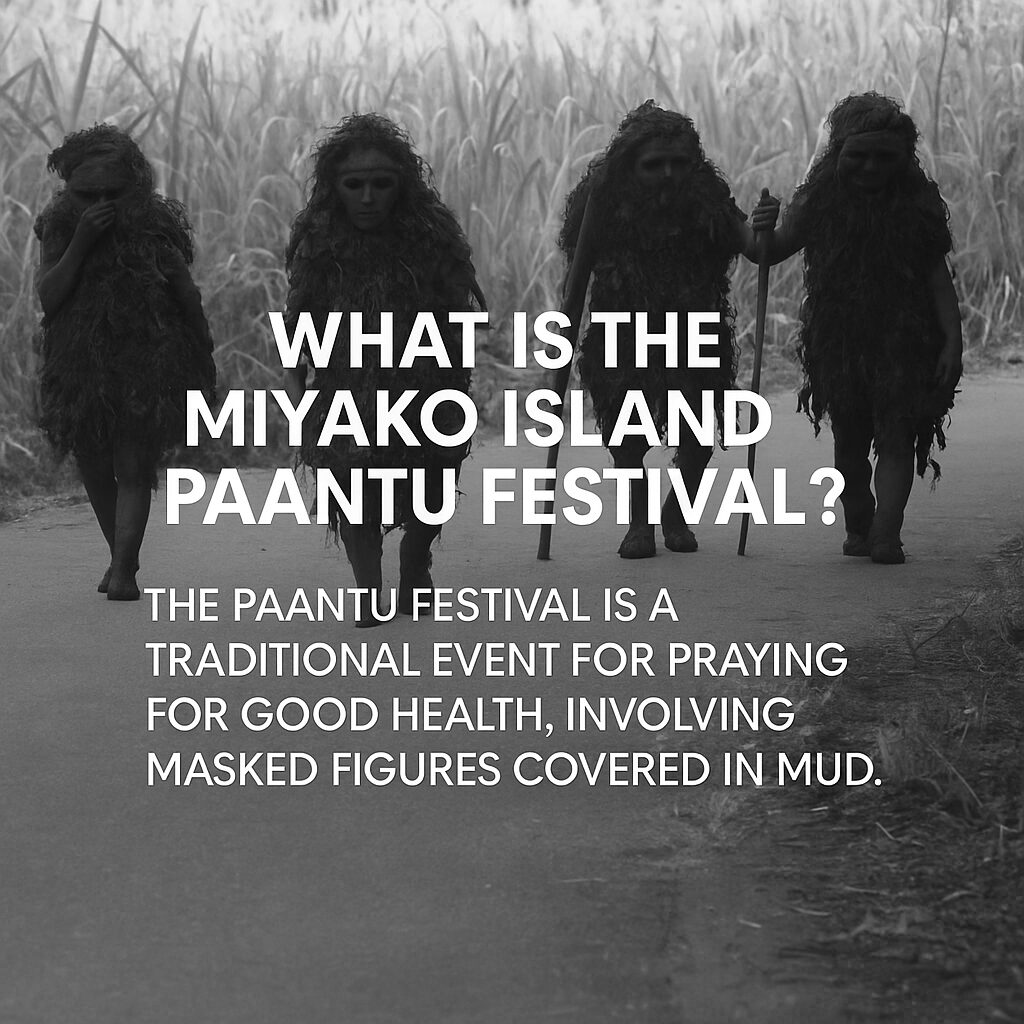
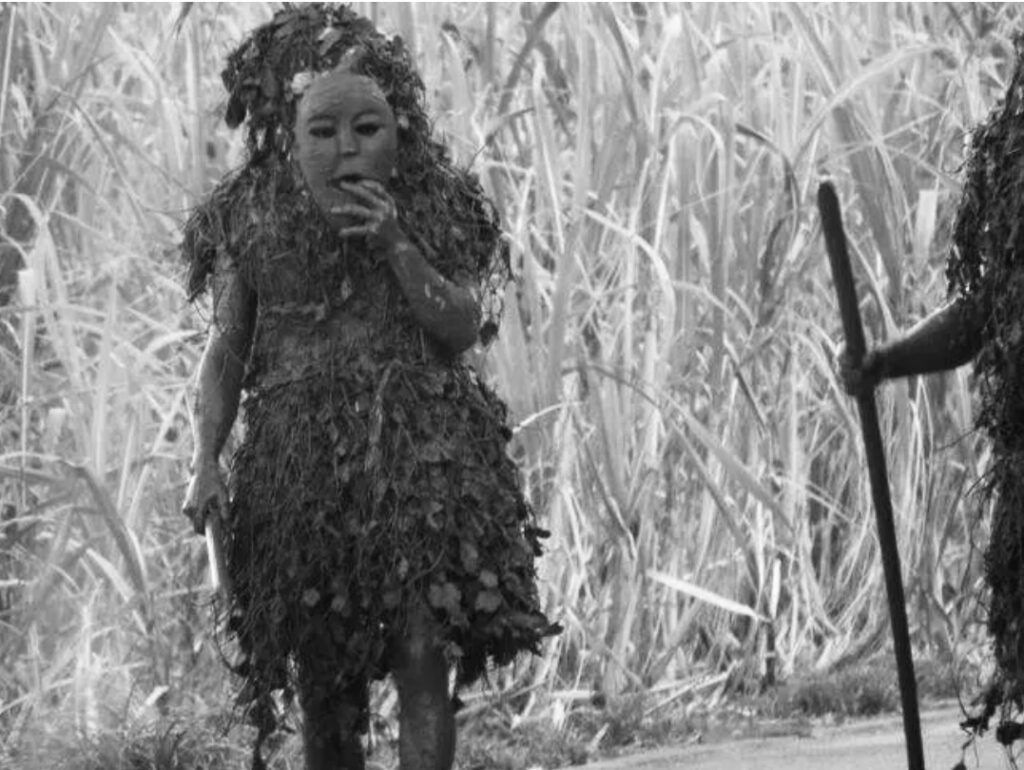
The Paantu Festival is a traditional purification ritual held in Miyakojima, Okinawa Prefecture, every year in early October. In this event, figures called Paantu, dressed in masks and covered in mud and vines, roam the village and smear mud on people and newly built homes. This act is believed to ward off evil spirits and bring health and safety to households.
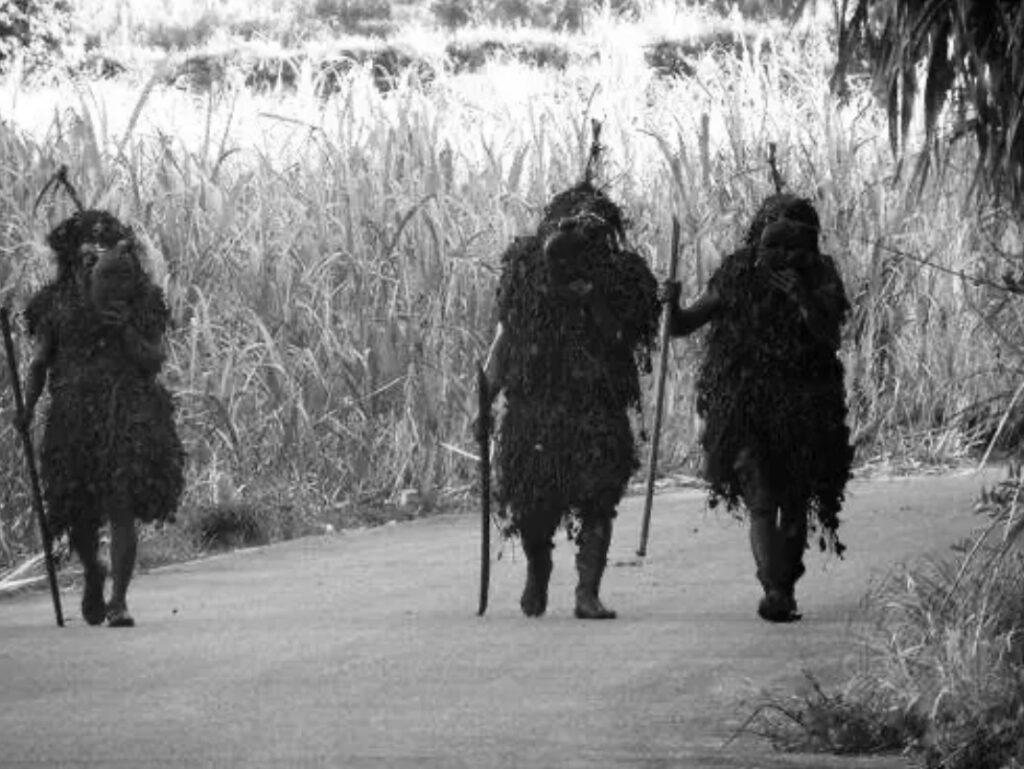
(Photo of the 1984 Paantu Festival courtesy of Mr. Honchi)
Key Features of the Festival
- Ritual of Purification: In the local belief, Paantu is considered a divine figure that drives away misfortune. Getting smeared with mud by Paantu is seen as a way to receive blessings for health and protection. This includes both locals and tourists—anyone can be “blessed” with mud.
- Shimoji and Nobaru Districts: The festival mainly takes place in the Shimoji District and Nobaru in the Ueno area. Each district’s Paantu has unique features—for instance, the Paantu in Nobaru is also known as Satiparo and follows a different format.
- UNESCO Intangible Cultural Heritage: In 2018, the Paantu Festival was officially registered as a UNESCO Intangible Cultural Heritage and is also designated as an Important Intangible Folk Cultural Property of Miyakojima.
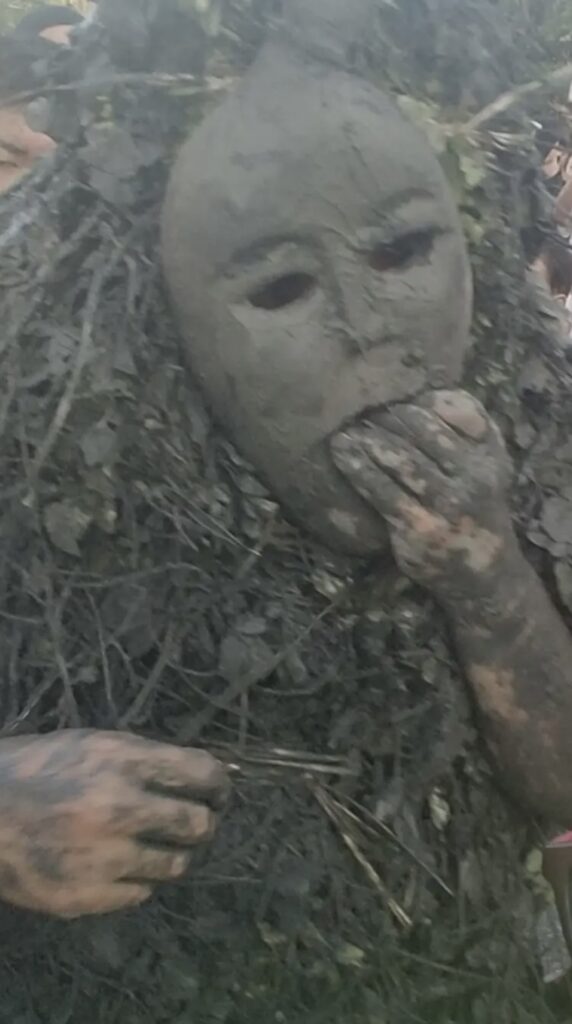
Festival Information
- Location: Shimoji District, Hirara, Miyakojima City, Okinawa Prefecture
- Date: Held annually in early October; specific dates are usually not announced until shortly before the event
- Access: Approximately 20 minutes by car from Miyako Airport, and about 15 minutes from the city center. There are no official parking lots—street parking is common.
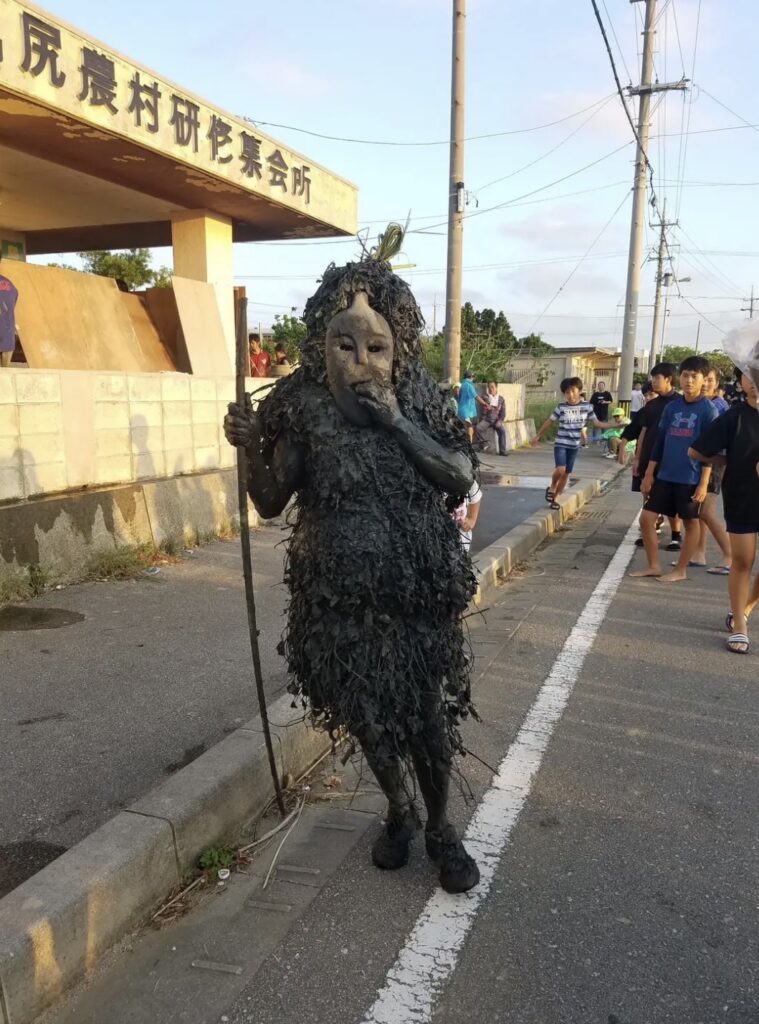
Preparation & Tips for Participants
- Clothing: Wear clothes you don’t mind getting dirty. If you want to get smeared intentionally, white clothing is recommended as the mud stands out more.
- Items to Bring: A change of clothes, a towel, and water will be helpful. If you’re using a rental car, prepare accordingly to avoid getting the interior dirty.
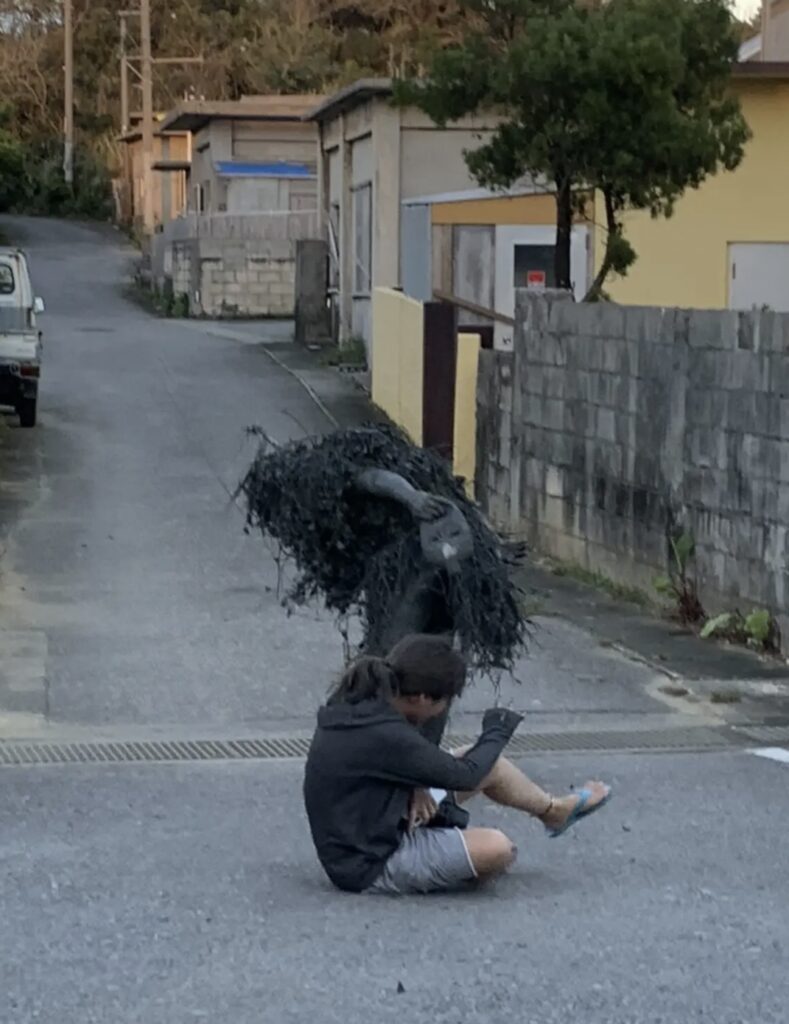
The Paantu Festival is a powerful and immersive cultural experience, offering a rare glimpse into one of Japan’s most unique traditions.







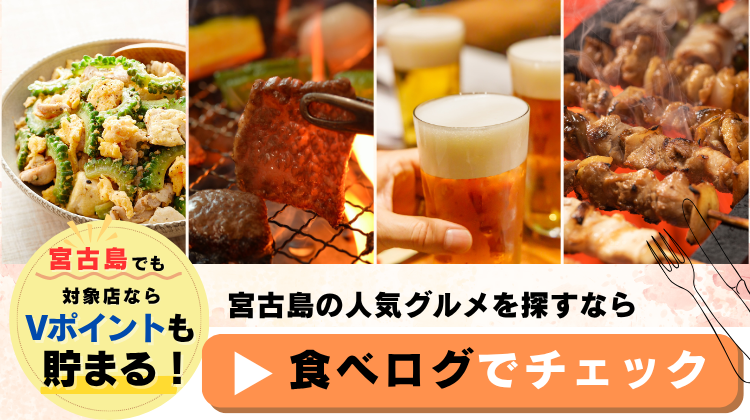
最近のコメント